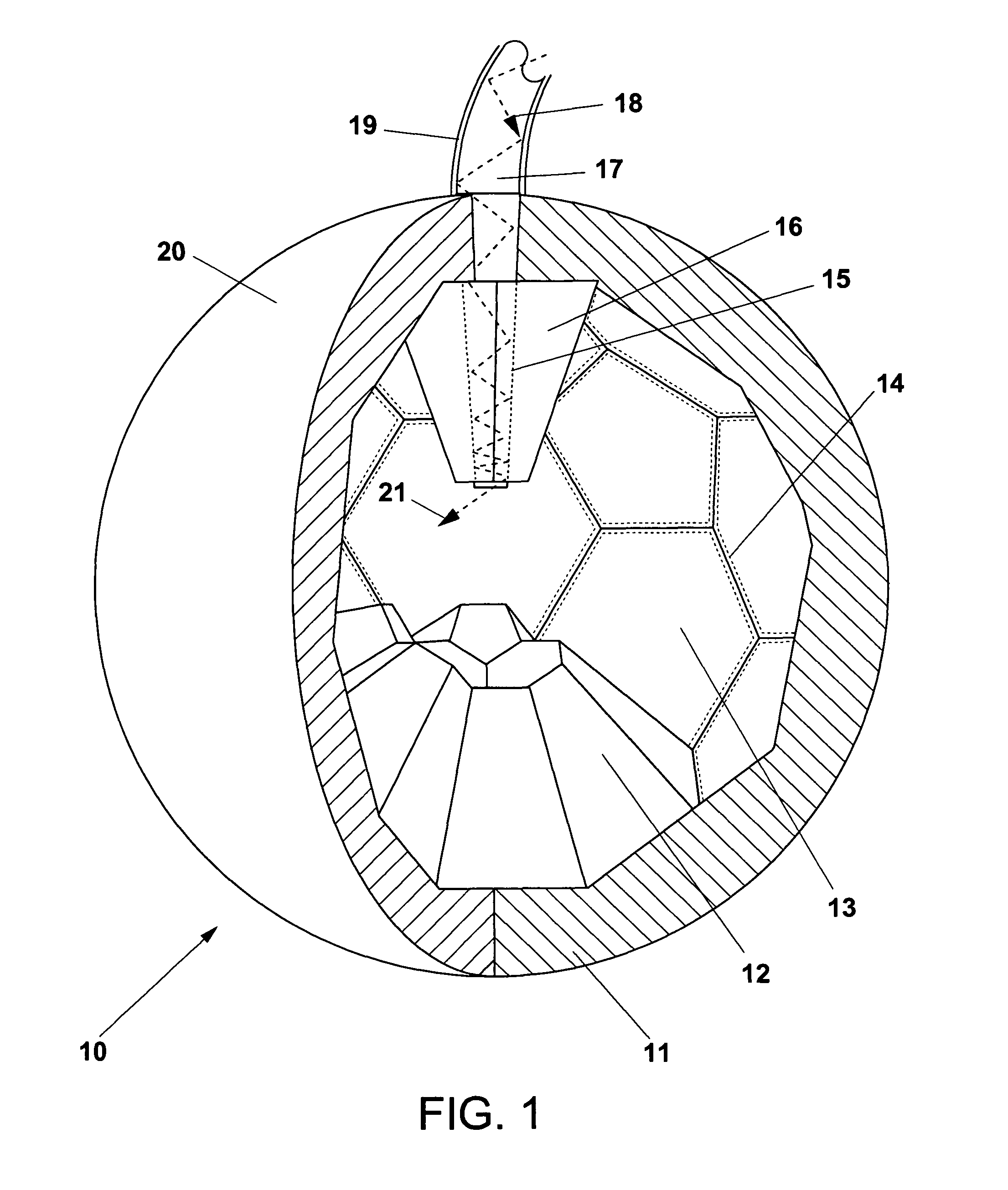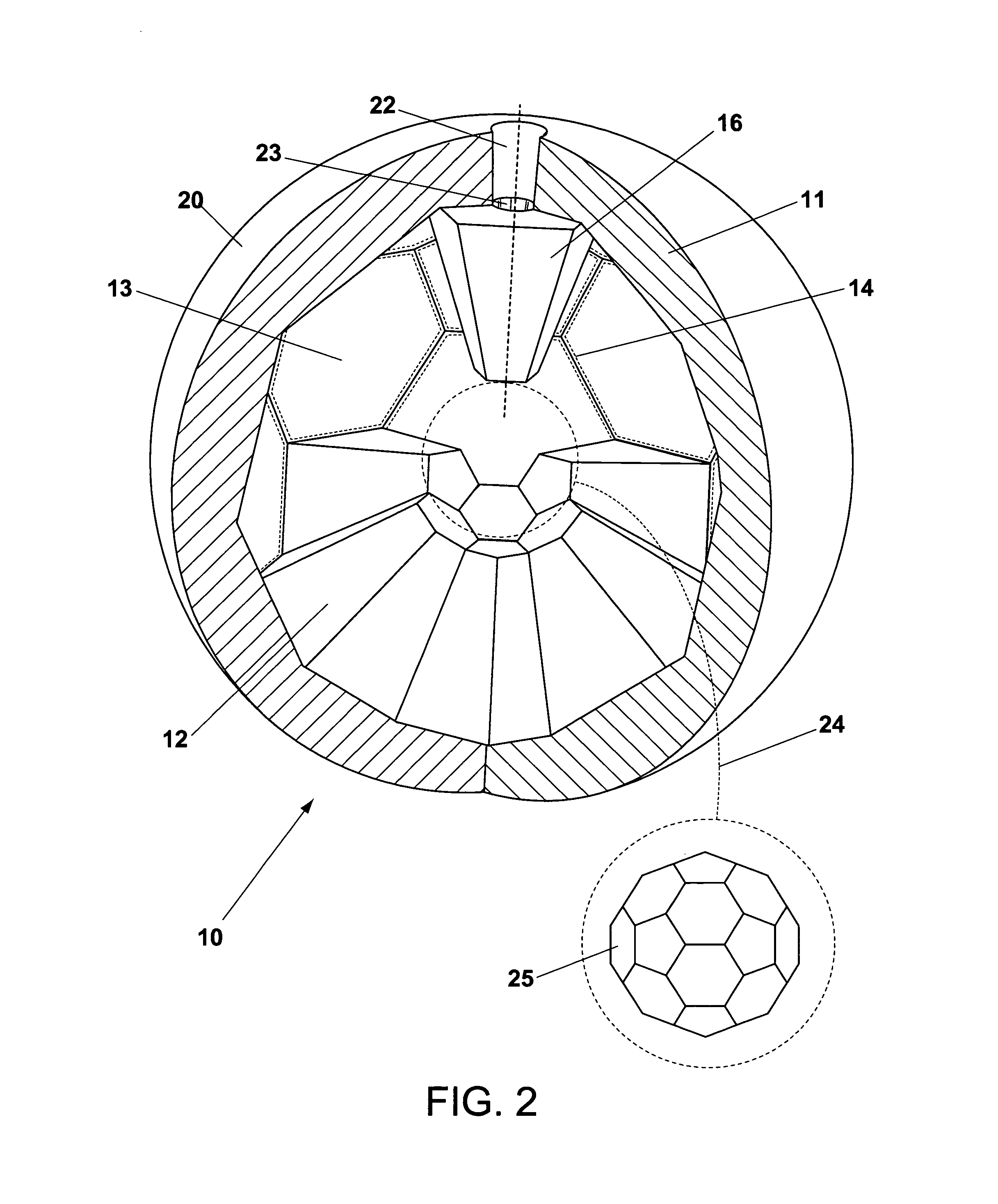Electric power generator based on photon-phonon interactions in a photonic crystal
a technology of photon-phonon interaction and photonic crystal, which is applied in the direction of crystal growth process, discharge tube/lamp details, nuclear engineering, etc., can solve the problems of energy loss, energy loss to the heating of materials, waste of energy,
- Summary
- Abstract
- Description
- Claims
- Application Information
AI Technical Summary
Problems solved by technology
Method used
Image
Examples
Embodiment Construction
FIGS. 1, 2, 3A, 3B, and 4—Preferred Embodiment
[0051]A preferred embodiment of an electrical power generation plant 10 is illustrated in both FIG. 1 and FIG. 2, which show views of the embodiment from different observation directions. The outer shell 20 is both a low temperature reservoir and a pressure vessel. The outer shell is constructed from a high thermal conductivity material 11 such as a metal stainless steel and may also have heat radiating fins (not shown) to assist in transferring unused heat energy out of the PVC module. Entering through the outer shell is a feed-through conduit 22 that passes light 18 from an external light conduit 19, having a reflective surface 17, through to light pipe 15 that is cut in a photonic crystal structure 16. The solar radiation 18 is collected from a remote location (not shown). In the preferred embodiment a light conduit 19 may be wrapped in electrical conductors and electrically insulating material so that the electricity that is generate...
PUM
 Login to View More
Login to View More Abstract
Description
Claims
Application Information
 Login to View More
Login to View More - R&D
- Intellectual Property
- Life Sciences
- Materials
- Tech Scout
- Unparalleled Data Quality
- Higher Quality Content
- 60% Fewer Hallucinations
Browse by: Latest US Patents, China's latest patents, Technical Efficacy Thesaurus, Application Domain, Technology Topic, Popular Technical Reports.
© 2025 PatSnap. All rights reserved.Legal|Privacy policy|Modern Slavery Act Transparency Statement|Sitemap|About US| Contact US: help@patsnap.com



